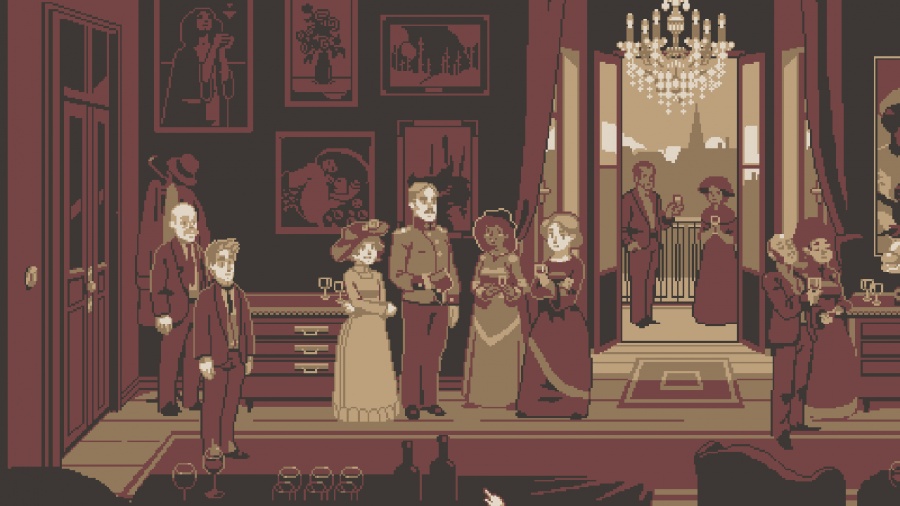Review: The Lion's Song
The Lion’s Song is an episodic cross-platform video game set in and near Vienna shortly before the First World War. The game features pixel art in a six color sepia palette, which gives it a unique look and feel.
While the game mechanics resemble point-and-click adventure games, this is more of an interactive story. There is no inventory; choices and decisions largely take the place of puzzles.
Each of the four episodes only has about 30 minutes of play time, but the game encourages you to revisit past decisions and explore the connections between the lead characters of each episode (all fictional):
-
Wilma Dörfl, a composer of humble origins who is trying to finish a pivotal piece that could make or break her career, while figuring out her relationship with her mentor;
-
Franz Markert, a painter who is making his debut in Gustav Klimt’s art salon, and who can see “layers” in the personalities of the people around him, while being unable to see them in himself;
-
Emma Recniczek, a mathematician who is looking for guidance from Vienna’s “Radius” (a circle of mathematicians who meet regularly in the backroom of a cafe), but who faces rejection because she is a woman;
-
Albert, the son of a baron who wanted to become a journalist, but finds himself forced to start a military career; during a train journey he meets people who are connected to each of the three characters above.

Franz Markert (second from left) in the art salon (Credit: Mipumi Games GmbH. Fair use.)
The second and third episode have the most depth. It’s fun to be Markert and visit Vienna’s street vendors or the art salon, observing little ghost figures (the “layers” he sees in people’s personalities) appear behind other characters as you walk by them. You get to choose which character you want to paint, which contributes a lot to the replay value of this episode.
Playing Emma, you face important choices regarding your identity and how you present yourself to others, as you try to overcome the societal obstacles to your career as a female mathematician developing a new “theory of change”. Along the way, you briefly meet Markert in a cafe, who is always on the lookout for interesting people to paint.
The sounds and music of the game—the storm and rain outside Wilma’s cabin; the sound of horses in the streets of Vienna; the chatter of the salon—give the game an immersive quality that you might not expect from looking at its low-resolution graphics. The composition which gives the game its title—the Lion’s Song which Wilma composes in the first episode—plays a role similar to the Cloud Atlas composition in David Mitchell’s book of the same name, connecting the threads of story through a tapestry of beautiful music.
Some elements of the story are a bit forced (the confrontation between mathematicians in front of a class of unruly students comes to mind), but for the most part, you become invested in the characters and their fates. The decisions you make truly do have ripple effects throughout the episodes, from the exact composition of the music to the paintings that appear on the walls and the epilogue of the game. Even marginal aspects of the game—credits screens, the “connections” section—are lovingly designed interactive rooms.
You’re unlikely to get more than an evening or two of enjoyment out of this brief game, but the gorgeous art and music, the attention to detail, and the fascinating setting and characters make it unlikely that anyone who enjoys interactive stories would regret this purchase (as of this writing, $10 at GOG).